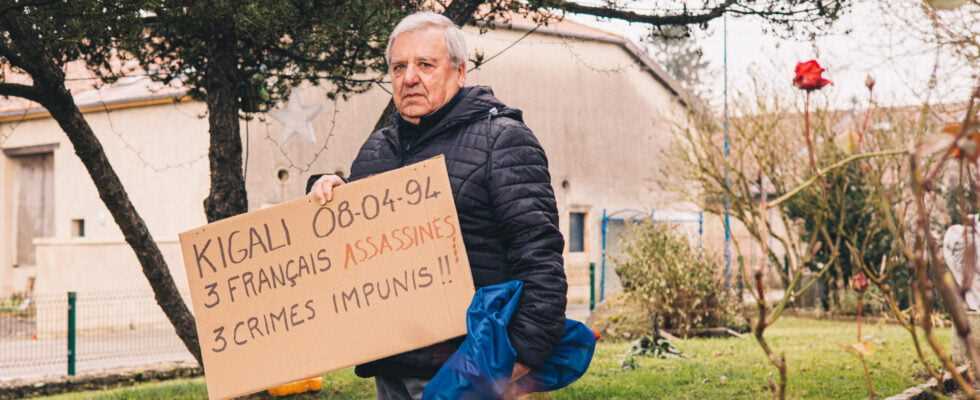Story“Rwanda, the impossible investigation” (1/2). In April 1994, when the country sank into chaos, two French gendarmes and the wife of one of them, as well as the Rwandan guard of their house, were killed in disturbing circumstances. The relatives of the victims continue to demand the truth, while extensive investigations have never been carried out.
It is a single storey house with pale yellow walls and a well-kept garden, as is often the case in Rwanda. It is located in a chic district of Kigali, a hundred meters from the Convention Center, a conference center recognizable by its spherical shape. Through the gate, we can see the lawn, freshly mown, and, on it, picnic tables. “The first corpses were found near the umbrellas, explains, from the street, Jean-Loup Denblyden, former lieutenant-colonel and reserve officer in the Belgian army. The last one was on the other side, at the end of the alley leading to the gate. “
This former reserve officer is categorical: it is indeed this house that his friend Jean Thiry had shown him during a previous visit, in 2014. Mr. Thiry had then specified that here, at the time of the genocide, in 1994, he unearthed the bodies of three Frenchmen: the gendarmes René Maier, Alain Didot and the latter’s wife, Gilda. Among the victims was also their Rwandan guardian and gardener, Jean-Damascène Murasira, “Buried, like the others, under a thin layer of earth”.
Who killed them on that spring day in 1994? Who buried the bodies? Is there a link between the assassinations of these two chief warrant officers specialized in radio transmissions and the attack against the Rwandan president, Juvénal Habyarimana, whose death triggered the genocide of the Tutsi on April 6, 1994? Twenty-seven years later, these questions remain unanswered. At the time, the French authorities did provide an account of the circumstances of their death, but this account only allows hypotheses, and not certainties. The Didot and Maier file remains an enigma, an equation with several unknowns, rich in gray areas, sulphurous characters and suspicious documents. In 1994, no judicial inquiry had been opened by the Paris prosecutor’s office, despite requests from a prosecutor and a deputy. In the archives of the army, in particular those of the gendarmerie, no trace of investigations, as if the affair had been erased, and the victims with it.
Gaëtan Lana, Gilda Didot’s brother, is convinced that everything has been done to hide an unspeakable truth. This is what he tells us when we meet him at his home, in a village on the outskirts of Metz. Looking at the family photos, he feels both anger and bitterness. “Alain was my brother-in-law, but also one of my best friends, he said fiercely. We met at the technical high school in Longwy, then he met my sister and married her… It’s been almost thirty years since Alain and Gilda died, and I still don’t know why. “ “From the start, we have been hiding things, adds his wife, Huguette. There are shady things behind their deaths. ”
You have 87.89% of this article to read. The rest is for subscribers only.
